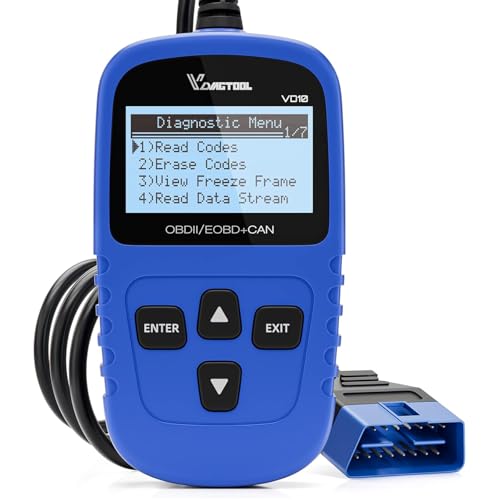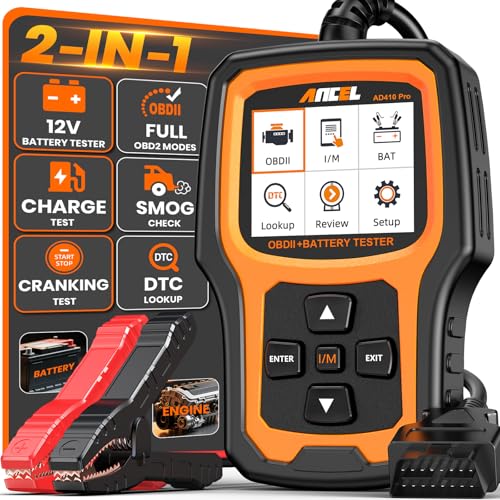Waiting for a car inspection and wondering how much of your day it will take? We’ve all been there, stuck in a waiting room, unsure if it’s a quick 15-minute task or a multi-hour ordeal that will derail your schedule. The uncertainty can be frustrating, especially when you have a busy day ahead. This guide cuts through the confusion, breaking down the exact time you can expect to spend based on real data and the key variables at play.
A standard car inspection typically takes 30 to 60 minutes. However, a quick emissions-only test might be done in 15 minutes, while a comprehensive pre-purchase inspection can last 1 to 3 hours.
Leveraging extensive analysis of state requirements and industry standards, this guide unpacks the critical factors that determine your wait time. We will explore the time differences between safety, emissions, and pre-purchase inspections, how your vehicle’s condition can speed up or slow down the process, and why choosing the right inspection station matters. Get ready to schedule your next car inspection with complete confidence.
Key Facts
- Standard Inspection Time: A typical safety and emissions inspection for a passenger vehicle usually ranges from 30 to 60 minutes, according to data from sources like DMV.org and Car and Driver.
- Pre-Purchase Inspections are Longer: A comprehensive Pre-Purchase Inspection (PPI) is a much more detailed process, taking between 1 to 3 hours to complete, as noted by automotive experts at Edmunds.
- Vehicle Condition Matters: A well-maintained car that passes all checks will have a significantly faster inspection. AAA notes that common failure points like worn tires or faulty lights add time for documentation and require a future re-inspection.
- State Laws Dictate Duration: Inspection times vary by state. A detailed annual inspection in Pennsylvania can take 30-60 minutes, while a standard Texas safety check is often completed in 20-30 minutes.
- Emissions Test Speed Varies: Modern On-Board Diagnostics (OBD-II) emissions tests are very fast, sometimes taking only 5-10 minutes. The Environmental Protection Agency (EPA) explains that older vehicles may need a longer dynamometer test.
How Long Does a Car Inspection Take? The Definitive Time Guide
A standard car inspection typically takes 30 to 60 minutes. However, this is just a baseline. A quick emissions-only test might be done in as little as 15 minutes, while a highly detailed, comprehensive pre-purchase inspection can last anywhere from 1 to 3 hours, or even longer. The key is understanding that not all inspections are created equal.

To set clear expectations, here is a quick breakdown of average times you can anticipate. This summary, based on analysis from automotive resources like DMV.org and Car and Driver, provides a clear at-a-glance guide.
| Inspection Type | Average Time (No Issues) | Potential Time (With Issues/Waits) |
|---|---|---|
| Safety Inspection | 15 – 30 Minutes | 45+ Minutes |
| Emissions Test (OBD-II) | 5 – 15 Minutes | 30+ Minutes |
| Emissions Test (Dynamometer) | 20 – 30 Minutes | 45+ Minutes |
| Combined Safety & Emissions | 30 – 60 Minutes | 60 – 90+ Minutes |
| Pre-Purchase Inspection (PPI) | 1 – 3 Hours | 3+ Hours |
Quick Fact: While the test itself can be quick, don’t forget to factor in potential wait times at the station! A 20-minute inspection can easily turn into an hour-long visit during a busy lunch rush.
What Key Factors Influence Your Car Inspection Time?
The duration of your inspection depends heavily on four things: the inspection type required, your car’s maintenance history, the busyness of the shop, and your state’s specific laws. Have you ever been surprised by how long an inspection took? One of these factors was likely the reason. Understanding these variables empowers you to plan your day more effectively and minimize your time spent at the service center.
Here is a detailed look at the core elements that can stretch or shorten your visit:
- The Type of Inspection Required
- A simple, modern emissions test is vastly different from a comprehensive, bumper-to-bumper safety check.
- A Pre-Purchase Inspection (PPI) is the most intensive, involving a deep dive into the vehicle’s mechanical and cosmetic condition.
- Your Vehicle’s Age and Condition
- A newer, well-maintained car is likely to breeze through the process.
- If the technician discovers issues like a check engine light, worn brake pads, or burnt-out bulbs, the process will halt. This adds time for documenting the failure and explaining the necessary repairs.
- The Inspection Facility’s Workload and Efficiency
- A dedicated inspection-only station with multiple bays may process vehicles much faster than a general auto repair shop juggling various jobs.
- Wait times are a major variable. Visiting during peak hours (like lunchtime or right after work) can add significant time before your car even enters the bay.
- Jurisdictional Requirements (State and Local Rules)
- Each state sets its own standards. Some states have rigorous annual safety inspections, while others only require emissions testing in certain counties.
- According to AAA, common failure points often relate to items that are easy to check beforehand, such as lights, wipers, and tires. Addressing these can significantly extend the inspection if they need to be documented as failures.
The Type of Inspection: Safety vs. Emissions vs. PPI
Safety checks take 15-30 mins, emissions tests 5-30 mins, and pre-purchase inspections 1-3+ hours. The single biggest factor determining how long you’ll wait is the specific type of inspection your vehicle needs. They vary widely in complexity and scope.
- Safety Inspection (Average Time: 15-30 Minutes)
A standard safety inspection is designed to ensure your vehicle’s critical components are in good working order. Technicians will typically check items like brakes, lights, turn signals, tires, steering, suspension, horn, and windshield wipers. For a vehicle in good shape, this is a relatively quick, checklist-driven process. -
Emissions Inspection (Average Time: 5-30 Minutes)
This test measures the level of pollutants your car’s exhaust system emits. The duration depends heavily on the method used.- OBD-II Test: For vehicles made in 1996 or later, this involves plugging a scanner into the car’s On-Board Diagnostics (OBD-II) port. The EPA notes that these modern tests are very quick, often taking just 5 to 10 minutes if the computer systems are ready.
- Dynamometer Test: Older vehicles may require a “dyno” test, where the car is driven on rollers to simulate road conditions while emissions are measured from the tailpipe. This is a more involved process that can take 20 to 30 minutes.
- Pre-Purchase Inspection (PPI) (Average Time: 1-3+ Hours)
This is not a state-mandated test but a comprehensive evaluation you should get before buying a used car. As Edmunds clarifies, a PPI is a much more involved process than a standard state inspection. A mechanic will put the car on a lift to check for frame damage and fluid leaks, inspect the engine and transmission, scan for hidden computer codes, and perform an extensive test drive. This thoroughness is why it takes significantly longer.
Pro Tip: If you only need an emissions test and your car is newer, look for an ’emissions only’ station for a potentially faster visit.
Your Vehicle’s Condition: The Pass vs. Fail Difference
A well-maintained car will have a much faster inspection. Finding issues like worn tires or faulty lights adds time for documentation and leads to a failed test and future re-inspection. The difference between a smooth, quick inspection and a long, frustrating one often comes down to the condition of your car before you arrive.
Think of it like a doctor’s check-up. A clean bill of health is a quick visit; finding an issue requires more time for diagnosis and a follow-up plan.
If your car is in excellent shape, the technician can move through the checklist efficiently, resulting in a Pass. The paperwork is completed, a new sticker is applied, and you are on your way.
However, if problems are found, the process changes. The technician must stop, document the specific reason for the Fail, and enter it into the system. This pause to record the failure, explain the required repairs to you, and process the paperwork for a failed inspection inevitably adds time to your visit. Furthermore, you will then have to schedule repairs and return for a Re-inspection, adding another visit to your calendar.
According to AAA, some of the most common reasons for inspection failures are surprisingly simple and preventable. These include burnt-out light bulbs, worn-out windshield wipers, and tires with insufficient tread depth. A quick 5-minute check of these items in your driveway before you go can be the difference between a 30-minute pass and a 60-minute fail.
How Long for a Car Inspection at Different Locations?
While the inspection itself is standardized, total time varies by location. Dealerships may have longer waits due to complex service schedules, whereas quick-lube shops like Jiffy Lube are designed for faster turnover. The place you choose for your inspection can have a major impact on your total time commitment, largely due to wait times and shop efficiency.

Here’s a comparison of what to expect at different types of facilities:
| Facility Type | Potential Pros | Potential Cons / Time Factors |
|---|---|---|
| Dealership | Manufacturer-specific expertise, can perform recall-related repairs | Often busy with scheduled service, may have longer wait times for walk-ins, potentially higher cost |
| Independent Shop | Can build a relationship, may offer more personalized service | Efficiency varies greatly, may only have one or two certified inspectors, inspection may be a lower priority than larger repair jobs |
| Quick Lube / Jiffy Lube | Designed for fast turnover, often have dedicated inspection bays | May try to upsell other services, technician expertise can vary |
The concept of shop efficiency, often discussed by organizations like the Automotive Service Association (ASA), is key here. A well-managed shop with clear processes and dedicated staff for inspections will almost always be faster than a disorganized one.
Pro Tip: Regardless of where you go, calling ahead to ask about current wait times is the single best way to manage your schedule. A quick phone call can save you an hour of sitting in the waiting room.
State-by-State Guide: Average Inspection Times
Inspection times are state-mandated. Expect around 20-30 minutes in Texas for a safety check and 30-60 minutes for Pennsylvania’s more detailed annual inspection. Because vehicle inspections are governed at the state level, the requirements—and therefore the time they take—can differ significantly depending on where you live.
A notable example of state variation is Pennsylvania’s requirement for a technician to remove at least one wheel to properly inspect the brake components, a step not required in many other states. This single rule adds time and complexity to every PA inspection.
Here are a few examples for states where users frequently ask about inspection times.
How Long for a Car Inspection in Texas
A Texas safety inspection usually takes 20-30 minutes. According to the Texas Department of Public Safety (TxDPS), which oversees the program, the annual inspection is a safety-only check for most counties (some densely populated counties also require an emissions test). The straightforward safety checklist allows certified inspectors to complete the process efficiently, assuming no faults are found with the vehicle.
How Long Does a Car inspection Take in PA
Pennsylvania’s detailed inspection takes longer, typically 30-60 minutes. The Pennsylvania Department of Transportation (PennDOT) outlines a more comprehensive annual safety inspection compared to many other states. The process is more thorough and includes checks that require more time, such as physically inspecting brake pads and rotors. If your county also requires an emissions test, this will be performed in addition to the safety check, placing the total time firmly in the 30 to 60-minute range.
To ensure you pass your car inspection on the first try, consider using an OBD2 scanner to check for any hidden error codes beforehand.
FAQs About Car Inspection Duration
How long is a car inspection good for?
This depends entirely on your state’s regulations. For most states with annual inspections, the sticker is good for exactly one year. Some states, like Texas, will issue a two-year inspection for brand new vehicles. Always check your specific state’s DMV or equivalent agency for official rules.
How long do I have to get my car inspected before registration?
In most cases, a valid, passing inspection is a prerequisite for renewing your vehicle’s registration. This means you must get the inspection done shortly before your registration is due. The exact window varies, so it’s best to check with your local motor vehicle agency for specific timelines.
How long does a car inspection take in NY?
A New York state vehicle inspection, which includes both safety and emissions components, typically takes between 30 and 60 minutes. The safety portion is comprehensive, and the emissions test is required for most vehicles, making it similar in duration to states with thorough annual checks like Pennsylvania.
How long does a MD state inspection take?
A Maryland state safety inspection is required only when transferring ownership of a vehicle (when you buy a used car or move to the state). It is a very comprehensive, one-time inspection that can take 60 to 90 minutes to complete. It is much more rigorous than the annual inspections required in neighboring states.
Do brand new cars need an inspection right away?
This varies by state. In many states, a brand new car sold by a dealer will have a valid inspection sticker that is good for a longer initial period, often two years, before it must be inspected annually. However, some states require the inspection to be performed within a short period after purchase.
Final Summary: Planning Your Car Inspection
To summarize, you should plan for 30-60 minutes for a typical car inspection. However, always remember this timeframe can easily change based on your car’s condition, the specific type of test required, the shop’s current workload, and your state’s unique laws. A comprehensive Pre-Purchase Inspection is a much bigger time commitment and will take at least 1 to 3 hours.
By understanding the key variables, you can move from hoping for a quick visit to planning for a realistic one.
- Know Your Test: Is it a simple emissions check or a full safety inspection? Knowing this is the first step to an accurate time estimate.
- Check Your Car First: A 5-minute pre-check of your tires, lights, and wipers can prevent a failed test and save you an hour.
- Call Ahead: The single best tip is to call the inspection station before you go to ask about their current wait time.
Now that you know the factors, you can schedule your next car inspection with confidence. Call your local station ahead of time to get the most accurate estimate for your day
Last update on 2025-11-27 / Affiliate links / Images from Amazon Product Advertising API











